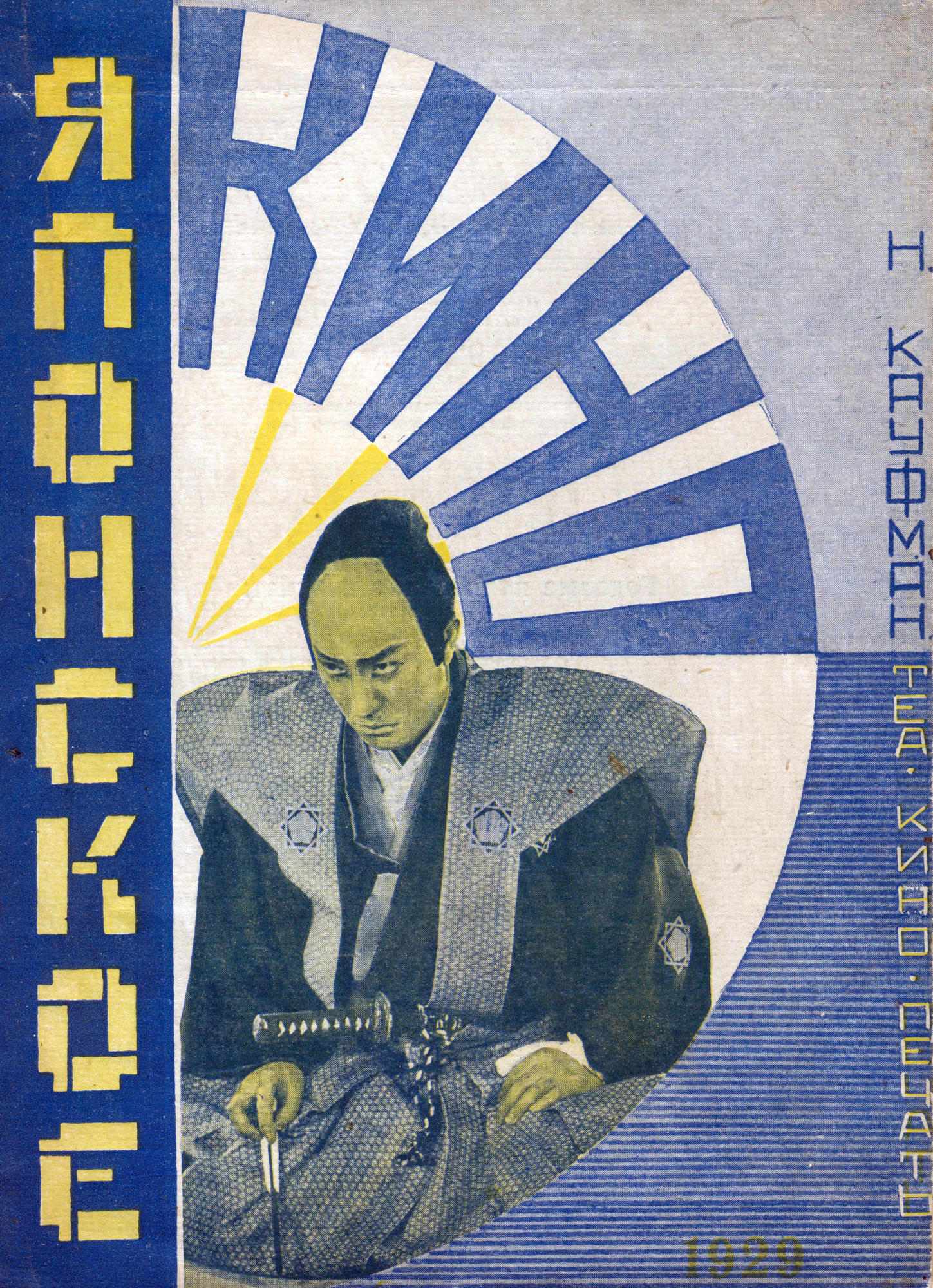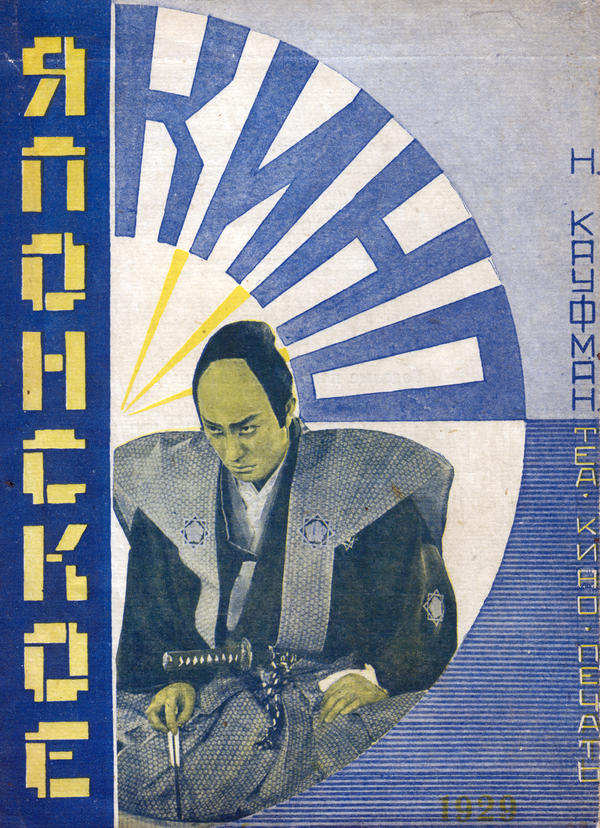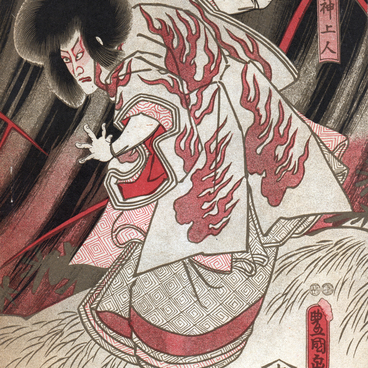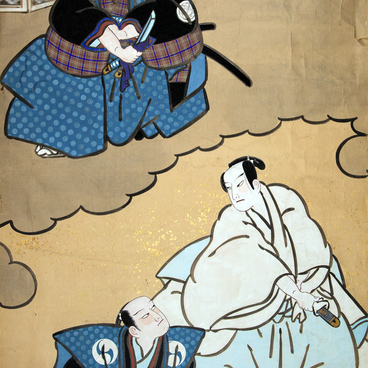N. Kaufman’s booklet “Japanese Cinema” (1929) with Eisenstein’s article ‘Beyond the Shot’ was printed in the wake of the Soviet public’s acquaintance with the theater and cinema of Japan. In his article, Eisenstein is concerned with the question that worried many masters of the recently invented cinema: what is the language of cinema? Is it possible to compare a frame with a letter, a sound, or a word? Or is it not so simple? Japanese hieroglyphic writing helped Sergey Mikhailovich to provide his own answer.
1 / 2
Booklet on Japanese cinema
Время создания
Moscow: Tea-Kino-Pechat’, 1929
Техника
Paper, paperclip, graphic printing
Коллекция
Выставка
#1
N. Kaufman
Japanese cinema
#2
#4
The combination of two hieroglyphs of the simplest series is not considered as the sum of them, but as their product… For example: the image of water and eyes means crying; […] the knife and the heart mean sadness, etc. But this is montage! S. M. Eisenstein, “Beyond the Shot”The combination of two hieroglyphs of the simplest series is not considered as the sum of them, but as their product… For example: the image of water and eyes means crying; […] the knife and the heart mean sadness, etc. But this is montage! S. M.
Eisenstein, “Beyond the Shot”
читать дальшескрыть
Booklet on Japanese cinema
Время создания
Moscow: Tea-Kino-Pechat’, 1929
Техника
Paper, paperclip, graphic printing
Коллекция
Выставка
Открыть в приложении
Поделиться




